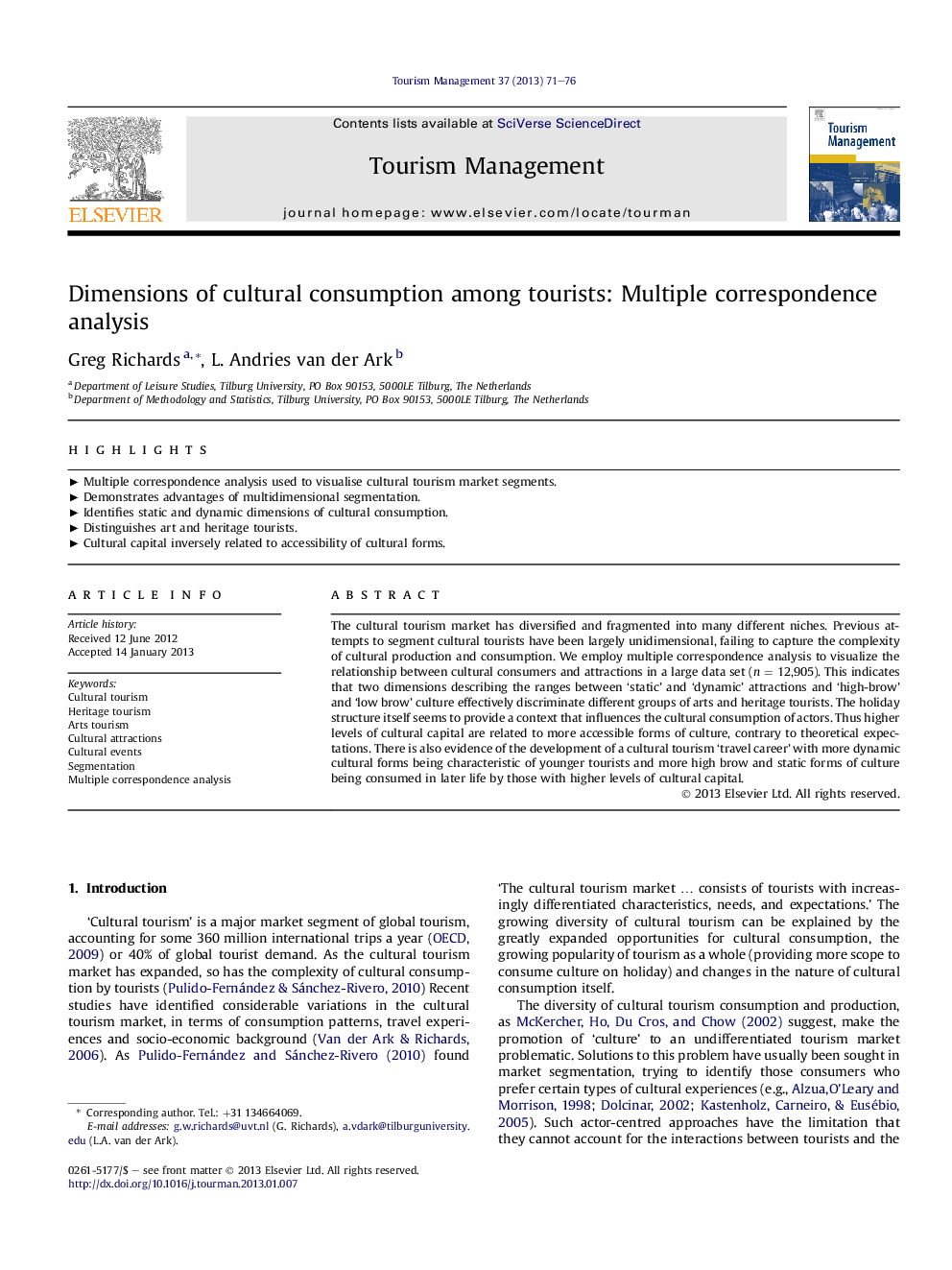| Article ID | Journal | Published Year | Pages | File Type |
|---|---|---|---|---|
| 1012373 | Tourism Management | 2013 | 6 Pages |
The cultural tourism market has diversified and fragmented into many different niches. Previous attempts to segment cultural tourists have been largely unidimensional, failing to capture the complexity of cultural production and consumption. We employ multiple correspondence analysis to visualize the relationship between cultural consumers and attractions in a large data set (n = 12,905). This indicates that two dimensions describing the ranges between ‘static’ and ‘dynamic’ attractions and ‘high-brow’ and ‘low brow’ culture effectively discriminate different groups of arts and heritage tourists. The holiday structure itself seems to provide a context that influences the cultural consumption of actors. Thus higher levels of cultural capital are related to more accessible forms of culture, contrary to theoretical expectations. There is also evidence of the development of a cultural tourism ‘travel career’ with more dynamic cultural forms being characteristic of younger tourists and more high brow and static forms of culture being consumed in later life by those with higher levels of cultural capital.
► Multiple correspondence analysis used to visualise cultural tourism market segments. ► Demonstrates advantages of multidimensional segmentation. ► Identifies static and dynamic dimensions of cultural consumption. ► Distinguishes art and heritage tourists. ► Cultural capital inversely related to accessibility of cultural forms.
